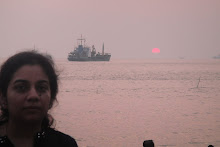
Title : City of Djinns
Author : William Dalrymple
Publisher : Penguin Books India
ISBN : 978-0-143-03106-2
William Dalrymple is an accomplished historian and a great narrator. City of Djinns traces back the history of a fascinating city- Dilli or Delhi, which has innumerable stories buried deep in the folds of centuries that it stood witness to. The bygone eras are beautifully brought to light in this book taking the readers to a retro journey to find the roots of the city which was believed to be first established as Indraprastha (the original name) by the Pandava borthers, post Kurukshetra battle. Since that time, the city has been through a lot, has witnessed a lot, has endured a lot, has lost a lot and has transformed a lot. This is one city which has displayed unmatched resilience as beautifully worded by the author here , "Though it had been burned by the invaders time and time again, millennium after millennium, still the city was rebuilt, each time it rose like a phoenix from the fire. "
During his one year stay in Delhi, William actually travelled centuries back trying to delve deep in the past of the city which makes it what it is today. He introduces the readers to the two worlds of the same city as they now exist - Old Delhi and New Delhi. Old Delhi which was once an epitome of prosperity, sophistication, culture and magnificence is nothing more than a graveyard of Mughal era now. What is visible now is just the sad reminder of the past, and the ugly face of poverty and ruin at every nook and crevice of the place. This is the same place which bore testimony to the zenith and nadir of great dynasties.
In contrast, New Delhi is what urban India represents - which initially became the shelter for people who poured in from the partitioned Pakistan during 1947 and later from Punjab during 1984 riots. These people, predominantly Punjabis are the business class elite and there is mutual despise between the citizens belonging to these two different worlds. Dalrymple points out that these two diverse worlds meet briefly at the traffic lights as outstretched palms are thrust through the open car windows. The plight of Old Delhi is evident from this excerpt - "Today Old Delhi is a dustbin. Those who can afford have houses outside the walled city. Only the poor man who has no shelter comes to live here. Today there are no longer any educated men in the old city. All the learning, all the manners have gone. Everything is crude now."
Not many places can claim to have been a witness to such extremes as - the affluence and prosperity of Mughal reign versus Persian Massacres in 1739, aestheticism at its best during the reign of emperors like Shah Jahan versus the plunder by British post 1857 mutiny, magnificent architectural genius which have withstood the harshest tests of times versus the indifference towards the same and letting these monuments crumble with time, safe haven for physically and emotionally bleeding people who migrated from Pakistan during partition versus new wounds that were opened in 1984 riots, and much more.
Where does the city stand today? Is there no one left to even remember the likes of Mir, Zauk, Ghalib, Dagh? Is there no patron of chaste Urdu any more? Has the city become a carcass without its soul?
City of Djinnns is a very well researched piece of writing and the mention of dates, eras and the sources of information bring in the authenticity of the same.
Dalrymple takes the readers along to various places, sights and experiences in his venture to dig deeper into the enigmatic city that is Delhi. He joins in the celebration of various Indian religious festivals and vividly presents the experiences. He spends time in the society of eunuchs who earlier were entrusted the task of guarding the Mughal harems but are now literally shunned by the society to fend for themselves by performing at weddings and births. He visits Sufi enclaves which have a huge following by people of all religions and beliefs. He also interviews many Anglo Indians who are completely disowned by both - the country of their birth (India) and the country with which they have blood ties. He meets those who are trying to defy change of times by taking pleasure in continuing the tradition of partridge fights and pigeon collection.
However, I found two irritants in the narration - on a couple of occasions the author delves deep into too many intricate details about a particular person or incident which takes the focus off the mainline narrative. Such places in the book prove to be big diversions in the otherwise well connected and understandable commentary on history.
Secondly, the mention of same old (ab)normal Indian stuff that has been poked fun at by many other Western authors. I guess my expectations run much higher from an author of William Dalrymple's stature and sensibilities, who has experienced Indian slice of life very closely for many years.





















.png)








